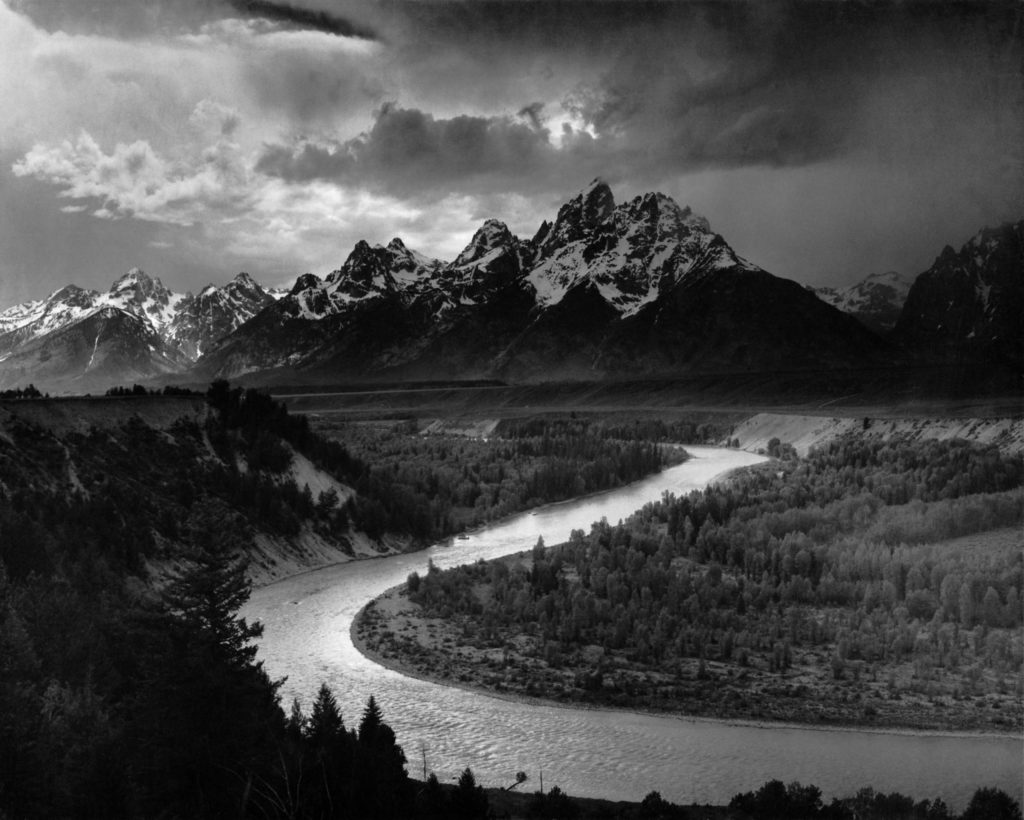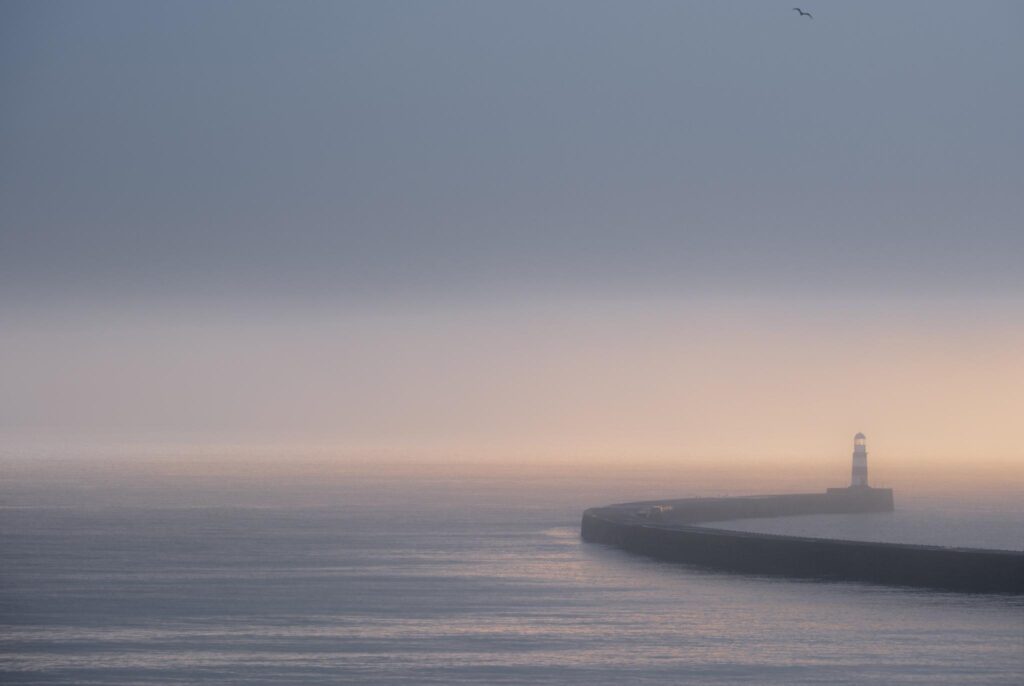To my mind, Ansel Adams‘ “The Tetons and the Snake River” is the most iconic landscape photograph ever taken and also has a pretty good claim to being the best photograph ever taken.

Agree? What's yours? Let us know in the comments.
It is also certainly the most famous photographic example of the compositional guideline of “leading lines.” I mean, look at it – the leading lines almost leap out of the image and hit you in the face.
But what lessons can we landscape photographers take from the image? Let's dive a bit deeper.
What Makes the Image So Iconic?
I have to admit to being a slight cynic when it comes to iconic anything as I think the main criteria for becoming iconic rest more with intent, fame and reception rather than technical, aesthetic or skilled aspects of that iconic thing.
In the case of this image, Adams was using the sheer beauty of such images in an attempt to make these landscapes (which, at the time were in danger of being destroyed for forestry and the like) famous in the mind of the public. For him, it was a (very successful) exercise in environmental conservation. He wanted people to fall in love with these places through his photography. I think this had more to do with these images becoming American icons than their technical excellence.
That is to say, the technical excellence of the shot was a necessary, but not sufficient reason for it becoming “iconic” in the minds of the wider public.
Furthermore, Adams was using such “beautiful” images to help establish photography as its own artform rather than being the poor cousin of painting. Another reason for the iconic nature of this (and other) images of his.
What Makes the Image a Good One?
There are a lot more aspects to this image than one can possibly dive into in a short blog post, so let's looks at a few of the main points about the exceptionalism of this photo.
What can be said about this image with confidence is that its technical aspects are pretty damn near perfect. This is where looking at this image becomes a masterclass for other landscape photographers.
As mentioned above, the leading lines compositional element is extremely powerful. Following on from that is its classic “S curve” composition (a subset of the leading lines composition guideline). You will find no finer technical example of these aspects of composition that every landscape photographer should aim to become intimately familiar with.
The division of the image into very definite foreground, midground, background also speaks to the primacy of composition in making a “beautiful” landscape photo.
The leading lines draw the eye of the viewer from the dark tones of the foreground forest through to the lighter tones of the snowy mountains in the background. Classic composition.
The wide tonal aspects lead to the what is also regarded highly about the image. Adams was the inventor of the Zone System (with Fred Archer) of film exposure. Most landscape photographers have at least a passing knowledge of it and this image is a classic example of its use.
This photo is basically the perfect practical example of all of these technical photographic aspects of composition and exposure in one glorious image.
What “The Tetons and the Snake River” Doesn't Tell Us About Landscape Photography
The main practical thing I personally take from this image is the “smack in the face” lesson and example of leading lines and s curve composition. Understanding it is relatively simple, but using it in landscapes is surprisingly tricky. Not impossible, but you have to work for it. And every landscape photographer should.
But here's the kicker.
At least theoretical knowledge of the composition of this image is basically EXPECTED of a competent landscape photographer these days.
Leading lines, s curve, thirds… all are very effective in their own right and necessary for a landscape photographer to get their head around – but they are the beginning of a journey into the rabbit hole of advanced composition.
It was the Advanced Composition book by Kent DuFault (whose knowledge of this craft, I am happy to admit, is well ahead of mine) that got me thinking more about this. While it is a great book, the striking thing is how MANY of these types of compositional guidelines a photographer can put to work in their images and how effective just following a few can really be.
Very useful.
Thirds, leading lines, S curve – all basic stuff, but advanced composition – it rests on the shoulders of giants like the Adams image, but it becomes increasingly important that we don't just emulate, but push ourselves.







4 Comments
My favorite Ansel Adams photo is Moon and Half Dome. The moon and cliff are beautiful in the picture and the shadow leaves you wondering what is coming.
Yeah, that one is also up there and I think a lot of people regard it as the best. I think at some point it just comes down to personal taste. 🙂
I agree with you Rob. Iconic, and stunning in every respect!
I was there last week and stood where he did when he took this photo, the trees had grown significantly and only about 25 yards of the river were even visible. Its interesting how things change and wonderful how he caught this scene.